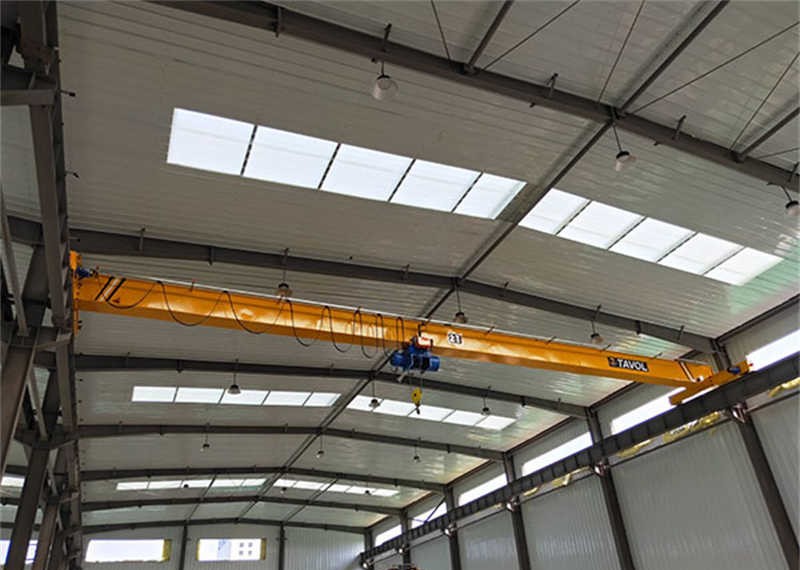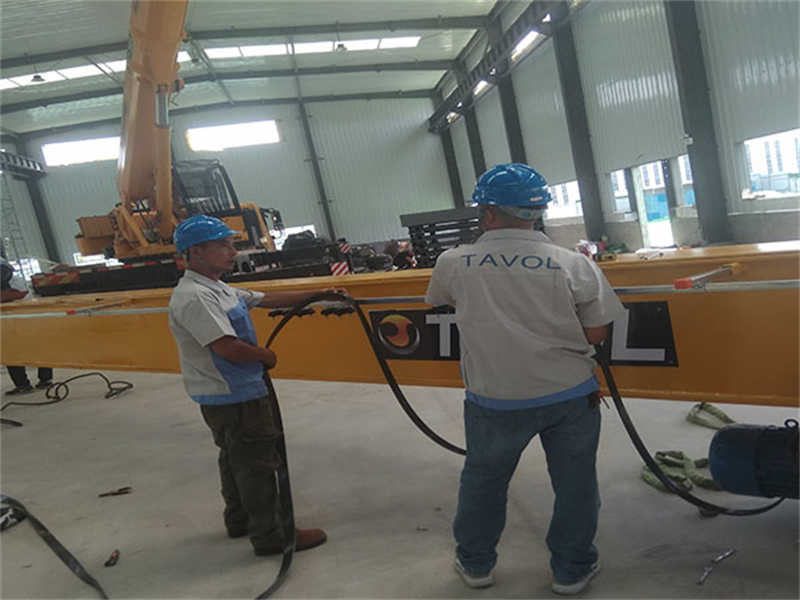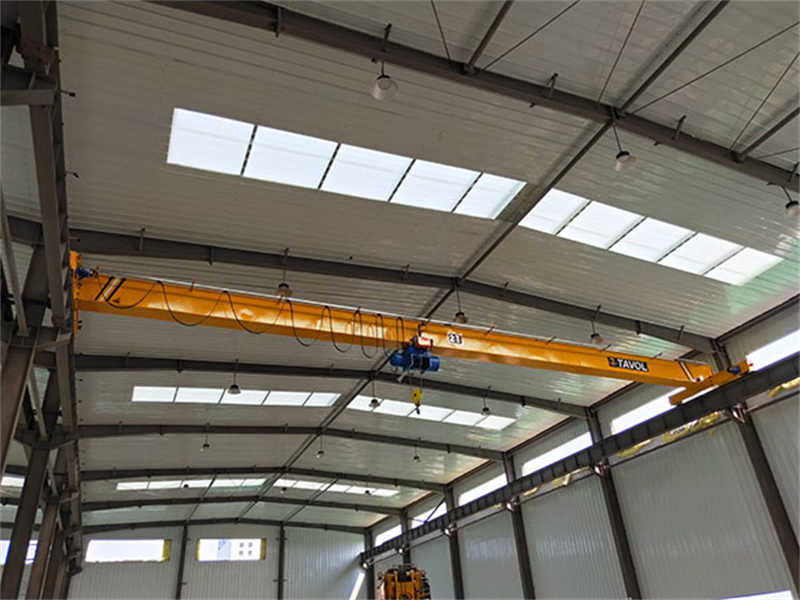
Safety matters and commissioning of overhead crane installation
Overhead crane is equipped with electric hoists and widely used in Steel Plant, Cement Plant, Power Plant ,Mine Industry, Food Industry, Chemical Industry, Ship yard, Stone Yard, and Warehouses ect .
When we install and test the overhead crane, we must attention safety first. Shandong Tavol Machinery provide some suggestion for our customer reference.


Notes during installation of overhead crane:
1) On-site construction of overhead crane installation and lifting must comply with the relevant regulations in the "Safety Technical Regulations for Construction and Installation Engineering" promulgated by the state.
2) All staff participating in the installation project should be familiar with the installation and construction plan of the project, and install according to the requirements of the plan.
3) During the construction process, the construction personnel must specify the division of labor and clarify their responsibilities. During the entire lifting process, they must obey the command and be familiar with the command signals. They must not leave the job without permission. The construction warning area divided during lifting should be surrounded by a restricted area sign. Non-construction personnel are strictly prohibited from entering. All construction personnel must wear safety helmets when entering the site.
4) During the entire construction process, clean up the site and remove all obstacles to facilitate operation. All personnel participating in high-altitude operations must wear safety belts when operating and hang them in a safe and reliable place. You should bring a tool bag when working at high altitudes. It is strictly forbidden to throw tools from high altitudes to avoid injury or accidents.
5) During the hoisting process of the equipment, the lifting or lowering should be stable, and no shock and vibration should be allowed. Do not stand and lift on the equipment at the same time. Interruption during the lifting process. Measures must be taken to dispose of the equipment and do not leave the equipment suspended overnight.
6) Except for the hoist, the electrical equipment must be grounded. Operators must be familiar with mechanical properties. Non-designated drivers are strictly prohibited from driving and the power should be cut off after work. The wire rope must not be twisted when it is wound into the drum during work. Bend sharply, the arrangement between the pressing rope and the steel rope should not be too loose. Otherwise, stop the vehicle and remove it. The brakes on the hoist should be checked before lifting heavy objects, and if there is any abnormal phenomenon, it should be adjusted in time.
7) When the operator is walking, he cannot walk on the track. At the same time, the pants must be tightened to prevent them from falling or hooking other objects.
8) Don't make trouble during working hours, drink operation is strictly prohibited.
9) Wear insulated gloves when using power tools, and ground protection.
10) When using buildings as piles and lifting points, the load capacity must be considered. If there are no exact parameters, you should consult the design department and civil engineering department before using it. At the same time, place wood and other objects around the building to avoid damaging the building and the wire rope.
11) When driving and lifting, you must contact the various projects before lifting.
12) The tackle used for hoisting should be thoroughly inspected before refueling.
13) Before using the steel wire rope, inspect it carefully for any rust and broken wires.
Notes during testing of overhead crane:
After the crane is installed, it should be tested in accordance with the requirements of the specification. The purpose is to check the design, manufacture and quality of the equipment after installation.
1)No-load test run:
The crane can't afford to lift heavy objects, so start moving the cart and cart slowly. Check that the distance between the crane and the building should meet the requirements. Generally, the two ends of the crane protrude at the pillar ≥60. The highest point of the crane and the roof truss is ≥100. Then use the speed of the party to make the big car and the small car go back and forth three times on the whole trip. And check whether the limit switch and the buffer are working well, then lift the hook three times, check whether the limit switch of the lifting mechanism is reliable, and other mechanisms (such as grabs) should also make corresponding test actions in turn.
2)Static load test:
Stop the crane at the pillar of the workshop, and the cart is in the middle of the cart. Use a steel tape measure to hang on the crane bridge and fix it. Measure the relative height of the bridge with a level gauge, write down the original data, and lift the lifting object from the ground 100 minutes for 10 minutes according to the design load. The difference (lower deflection) is not allowed to exceed 1/700, and then the load is unloaded. The data when no load is measured should be restored to the original data. After passing the rated load test, it is raised by 1.25 times the rated load and 100 off the ground. , Stay for 10 minutes, remove the load. Drive the trolley to the end of the bridge, check the permanent deformation of the bridge; repeat three times to measure the actual arch of the main beam: it should be greater than 0.8L / 1000.
3)Dynamic load test run:
Under the rated load, the lifting mechanism and the operating mechanism are repeatedly operated, and the actions of each mechanism should be sensitive, stable, reliable, and the performance should meet the requirements for use. The functions of limit switches and protective interlocks should be reliable and accurate. Then test at 1.1 times the rated load and start the hoisting and running mechanism at the same time. The cumulative start-up test time should be not less than 10 minutes, and the reliability of the workpiece of the brake should also be checked.
In the process of overhead crane production and installation, our company always pays attention to safety and quality. Provide customers with peace of mind and improve customer productivity. We will also share how to install overhead crane in the future.
When you have any need about overhead crane equipment, welcome to contact us.


